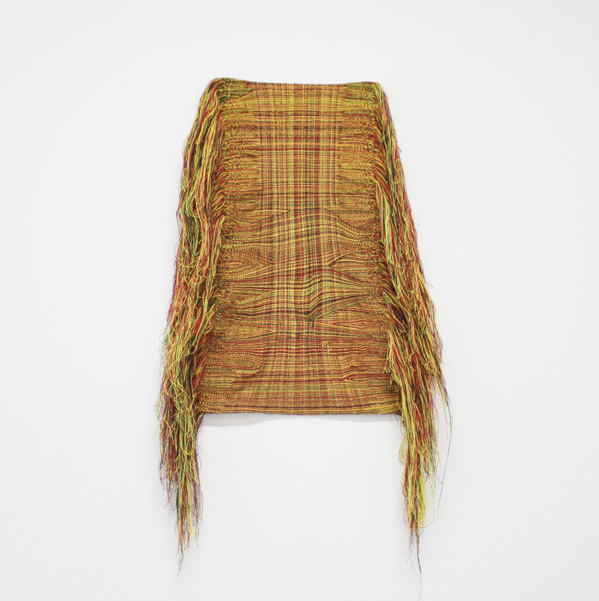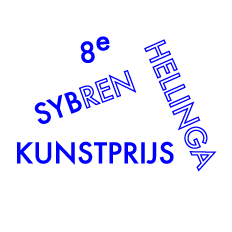17 October 2016
Interview with Sanne Vaassen
Vincent van Velsen

VV
What got you involved with art?
SV
Ever since I was young, I’ve a wide field of interest: from history to physics to biology. But above all it was drawing that captivated my the most. I love to observe, record and analyse things. Back in the day, when my father and I would go hiking, he would make an effort to reveal things to me that weren’t obviously apparent. He taught me to look closer. I think that that was an important first step towards my current practice.
VV
And how would you describe your current practice?
SV
I recently gave serious thought to how to describe my work in three words, but I couldn’t quite do it. The words I came up with were process, nature, time, moment, identity, culture, and many more. But how would I describe it? I can describe where it comes from. Previously, my work was mainly derived from a process, an action, something I did by hand, which resulted in a change, so there was a kind of a before and after event. Now I’ve come to discover that I’m still sort of searching for that in my work, but now in a greater whole. Every time something happens it can be placed in a larger whole. And every time, there’s a visible progression, or a change or a moment.
VV
When I visited your website in preparation for this interview, I thought I could identify a division, a distinction, or two strands. The one had more to do with natural processes and the other more with cultural processes, like nationalism, or design of communality.
SV
That’s true to some extent, but I would say more with identity, or the expressions of identity: the determinations or snapshots of identity. Such as a flag, which is such a strong symbol of identity. But also the freckles that I surrender to others (Cartography, 2016). It has to do with a portrait, a snapshot of an identity. And recording the fallen leaves from a tree (Trails of a tree, 2015), also has to do with that kind of portrait. Similar to the recording of rain falling. In Cummulus (2016), I use seven pages to document the progress of a rain shower.
VV
So in that sense it is an anti-ephemeral act. Considering the course or passing of something and then recording or capturing the associated process. Like the influence of a natural process on physical material. At the same time, you develop a fixed structure to work in. You write guidelines for yourself in advance and then create your work within those boundaries. This makes your work, on the one hand, fairly loose and dependent on coincidence, and, on other hand, very neatly framed within boundaries, for example literally confined to A4 page. How do you go about creating these specific frameworks, acts or topics?
SV
You are correct. I find something I’m interested in, such as rain, the sea, evaporation. I find such phenomena enthralling and I then try to capture or record it in one or another way. But in order to capture it, I set out rules for myself. So that I can anchor the phenomenon within a framework. Often it has to with circular processes. The beginning and end of the rain cycle, the ebb and flow or the tree subjected to the seasons. The elements are recurring – maybe with the exception of fire.
VV
And it has mostly to do with nature and its associated processes?
SV
Yes. At least they used to be. There happens to be a shift at the moment. A good example of this is my new work Flags (2016). In this project I take national flags apart, reducing them to threads, which I then give to a weaver from the corresponding country to turn into them new cloth. This one, for example, was made by a Belgian weaver. This is not strictly a natural process. These are things made by people. A flag is an expression of a national identity. The identity of a people, or a country, is a snapshot of the moment in which we live. Countries’ borders are forever changing. But also a newspaper with an immense influence in determining the truth, while it might not be the whole truth. What I find interesting is how people create something like this, such a concept, which becomes the truth. Something that did not exist before. While you can’t really create something else from water – it just is.
VV
Did you set out guidelines for the flag weavers, or did you leave it up to their personality? Do you see it as an act or expression of their personal identity, or simply more as a functional act in your own work process?
SV
No, there were no guidelines. Although, what you do have is the second person seeing the creation of the first. Thus, they will influence each other. But I do hope that they create the work from within themselves. What I ask them to do is produce a new cloth from the flag from the country that they come from. But the content is completely open and free. So they are free to see it as something completely functional, or something very playful. I can imagine that someone might make a pattern or design. They can decide all of that for themselves, as well as the size.
VV
Do you also have the Frisian flag to show at Kusnthuis SYB?
SV
No, I don’t. I started with countries. And I’m not too sure about what to exhibit. Also because I have recently been moving towards other topics. And it might not be very representative to show older works. Initially, I was thinking about a combination of old and new works. But then I thought, I have produced a work entitled Invisible Present (2015). For the Intimacy exhibition at Marres, every artist was assigned a house, and mine already had lots of art in it and its own chic minimalist style. So, then I took swabs from all the artworks and transferred the swabs to nutrient agar in petri dishes and let them grow into a new picture. In this way, I was able to show a kind of invisible presence. They were prints as it were form the originals. These were then projected back onto where I’d originally taken the swabs. We have no control over the shapes and colours that grow in these petri dishes; they derive historical matter. It shows us the invisible presence that exists on the artworks. Nothing is as it seems, just as in history or politics there is not one truth. And, at the exhibition at Marres, I also took swabs of the residents; from him and her, viewable on a light table.
I could do something like that at SYB, because I would like to research it more. The problem is that microorganisms are often seen as something disgusting. But that’s not the point. It could be very interesting; it could become an expanded research project, provided that the current format is worked out in further detail. Museums already research and analyse many layers of a painting; this could be an additional layer for study. With the Van Abbemuseum, Eindhoven, I intend to do further work on this concept, but a version of this could also be relevant for SYB.
VV
You have now also been nominated for the Parkstad Limburg Prize. So I take it that you take part in these kinds of Open Calls more often. How did you come to the Sybren Hellinga Art Prize and Kunsthuis SYB?
SV
I think through Pieter Paul Pothoven, who did a residency at Kunsthuis SYB this previous year. And through Ilke Gers [as part of Rieke Vos’ Festival of Sports (2015), Ed.] with whom I was at the Jan van Eyck with, and who has also been at Kunsthuis SYB. And I found the Open Call for the prize itself on Facebook.
